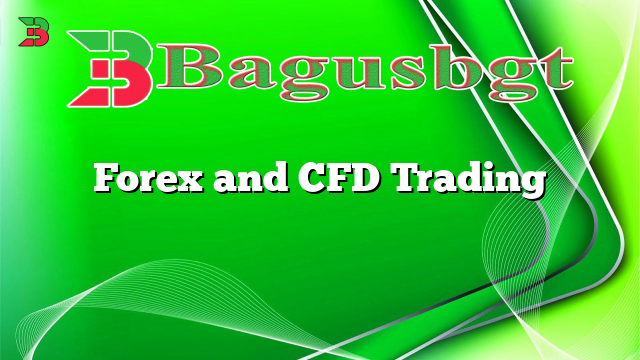Hello, dear readers! Today, we will dive into the world of Forex and CFD trading, exploring the ins and outs of these financial markets.
1. What is Forex and CFD Trading?
Forex, short for Foreign Exchange, is the global market for trading different currencies. CFD, on the other hand, stands for Contract for Difference, which allows traders to speculate on the price movements of various financial instruments without owning the underlying asset.
Both Forex and CFD trading are conducted over-the-counter (OTC), meaning they take place directly between the parties involved without a centralized exchange. These markets operate 24 hours a day, five days a week, providing traders with ample opportunities to profit.
2. Advantages of Forex and CFD Trading
One of the main advantages of Forex and CFD trading is the ability to profit from both rising and falling markets. In traditional markets, such as stocks, you can only make money when prices go up. However, with CFDs, you can also benefit from price declines by taking short positions.
Another advantage is the high liquidity of these markets. The Forex market is the largest financial market in the world, with a daily trading volume of over $6 trillion. This means that there is always a buyer and a seller available, ensuring that you can enter and exit trades at any time.
Furthermore, Forex and CFD trading offer leverage, allowing traders to control larger positions with a smaller amount of capital. This means that even with a limited investment, you can potentially earn significant profits. However, it’s important to note that leverage can also amplify losses, so risk management is crucial.
3. Disadvantages of Forex and CFD Trading
While there are many advantages to Forex and CFD trading, it’s essential to consider the potential drawbacks as well.
Firstly, the volatility of these markets can lead to substantial price fluctuations. While this volatility can present profitable opportunities, it also carries the risk of significant losses. Traders must be prepared to handle market volatility and have effective risk management strategies in place.
Additionally, Forex and CFD trading require a deep understanding of technical and fundamental analysis. Without proper knowledge and research, it can be challenging to make informed trading decisions. It’s vital to invest time in learning about different trading strategies and market indicators to increase your chances of success.
Lastly, Forex and CFD trading involve costs such as spreads, commissions, and overnight financing charges. These expenses can eat into your profits, so it’s important to factor them into your trading strategy.
4. Alternative Investment Options
If Forex and CFD trading do not align with your investment goals or risk tolerance, there are alternative options available.
One alternative is stock trading, where you can buy and sell shares of publicly traded companies. This can be done through traditional stock exchanges or online platforms. Stock trading allows you to become a shareholder in companies and potentially earn dividends.
Another option is investing in mutual funds or exchange-traded funds (ETFs). These investment vehicles pool money from multiple investors to invest in a diversified portfolio of stocks, bonds, or other assets. Mutual funds and ETFs offer a more hands-off approach to investing, as professional fund managers make investment decisions on behalf of the investors.
5. Forex and CFD Trading Information Table
Aspect |
Forex Trading |
CFD Trading |
|---|---|---|
Underlying Assets |
Currencies |
Various financial instruments (stocks, commodities, indices, etc.) |
Ownership |
No ownership of the underlying currency |
No ownership of the underlying asset |
Leverage |
High leverage available |
High leverage available |
Market Accessibility |
24 hours a day, five days a week |
24 hours a day, five days a week |
Risk Management |
Stop-loss orders, take-profit orders, hedging |
Stop-loss orders, take-profit orders, hedging |
6. Frequently Asked Questions (FAQ)
Q: Is Forex and CFD trading suitable for beginners?
A: While Forex and CFD trading can be profitable, it’s important for beginners to educate themselves and practice with demo accounts before engaging in live trading. Building a solid foundation of knowledge and experience is crucial to success.
Q: What are the recommended risk management techniques?
A: Risk management techniques in Forex and CFD trading include setting stop-loss orders to limit potential losses, taking profits at predetermined levels, and diversifying your portfolio to spread risk across different assets.
Q: How can I choose a reliable Forex or CFD broker?
A: When selecting a broker, consider factors such as regulation, reputation, trading platform, customer support, and trading conditions. It’s important to choose a broker that aligns with your trading goals and offers a secure and transparent trading environment.
Conclusion
In conclusion, Forex and CFD trading offer unique opportunities for traders to profit from the global financial markets. While they come with advantages such as 24-hour accessibility, the ability to profit from both rising and falling markets, and high liquidity, they also carry risks that should not be underestimated. It’s essential to approach these markets with a solid understanding of trading principles, risk management strategies, and a commitment to continuous learning and improvement.




